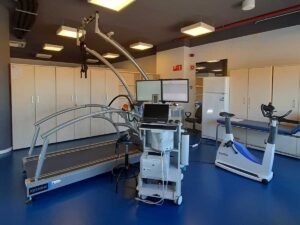Introduction
The objective of this study was to determine the effect of supplementation with isolated whey protein and a combined protocol of WB-EMS and whey protein, taking into account sarcopenic obesity and cardiometabolic appearance in men 70 years of age or older with sarcopenic obesity.
Method
A randomized controlled trial was conducted with 100 randomly selected men aged 70 or older with sarcopenic obesity. The 100 men were divided into 3 groups:
- WB-EMS and protein supplement (n=33).
- Protein supplement (n=33).
- Control group (n=34).
The WB-EMS protocol that was applied in this study was 85 Hz frequency, 350 us of pulse width in standing position with a duty cycle of 4 seconds of electrical impulse and 4 seconds of rest. 20 minutes of session were held each week for 16 weeks.
Results
Body fat significantly decreased the WB-EMS group with protein supplementation and not so significantly in the protein supplementation group. In the control group body fat increased not so significantly. The area of total visceral fat did not change in the control group and decreased in the WB-EMS groups with protein supplementation and in the protein supplementation only group. Again, a significant difference was determined between the WB-EMS group with protein supplementation and the control group.
The ratio of total cholesterol to HDL cholesterol changed favorably in both treatment groups and remained in the control group.
Conclusion
WB-EMS, time-friendly, efficient and highly personalized technology that mitigates barriers and concerns about conventional resistance exercise can be a safe and reasonable option for older, functionally limited and fragile people to fight obesity and sarcopenia.
Bibliography
Kemmler w., Kohl M., Freiberger E., Sieber C., y Von Stengel. (2018). Effect of whole-body electromyostimulation and / or protein supplementation on obesity and cardiometabolic risk in older men with sarcopenic obesity: the randomized controlled FranSO trial. BMC Geriatr, 18 (1):70.







